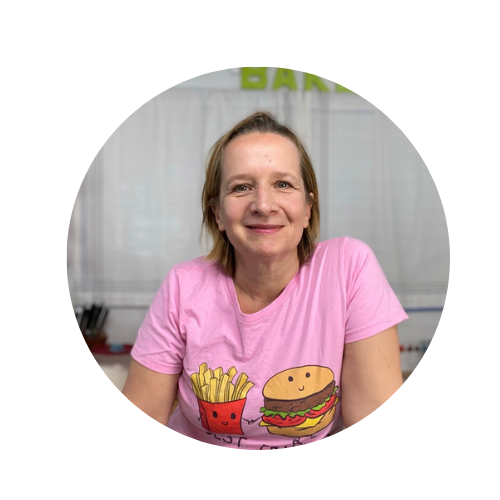|
If there is one thing we have learned in our kids cooking classes, it is that kids need to learn their tools! Introducing your kids to all the great kitchen utensils and tools is part of the fun when you're teaching your kids to cook! One of my favorite pieces of kitchen equipment is the kitchen mixer :) When I was little, the mixer held a place of honor in the kitchen. That mixer could turn egg whites into clouds and butter, sugar, and eggs into the smooth foundation of a cake. Needless to say, I was in awe of its power! After my mother taught me how to use it properly and safely, it became a trusty friend that came along on nearly all my baking adventures. Now, first things first, it has to be said that the kitchen mixer is not a toy. Before letting your kids handle it, you should teach them the right way to use it. Just like every other kitchen device, the mixer can be dangerous if it’s misused. Here are my tips on how to use a mixer safely :) The two types of kitchen mixerThere are two kinds of mixers we use in the kitchen and it’s handy to teach your kids how to operate them both. Every aspiring chef should know how to use both hand mixers and stand mixers. They both serve the same purpose, but they operate a bit differently. Hand mixerAs the name suggests, these mixers need to be held in your hand while operating them. They’re smaller than stand mixers, easier to store, and much easier to clean (don’t wash your hand mixer under running water, as water can get in and damage the engine). When operating your hand mixer, make sure the mixer is switched off before attaching the correct mixer paddles and plugging it in. The mixer has several speed settings but it’s best to start the mixer on the lowest speed setting when you begin and increase the speed if needed. Now, if the batter or dough you’re mixing is starting to resist, you can increase the speed a bit. Always keep the mixer paddles in the bowl while it’s operating, or you might end up with dough and batter strewn over your kitchen! (That will mean more clean up time :)) Finally, before removing the mixer from the bowl, make sure it has come to a complete stop. Remove the paddles from your mixer before washing them. Stand mixersStand mixers are bigger and stronger than hand mixers. It’s best to keep a close eye on your kids while they’re still learning how to use a mixer. Stand mixers consist of a stationary base and a top that has to be raised in order to attach the correct paddle and place the mixing bowl. Once you have the right attachment and the bowl is in place, the top can be lowered. The engine is located on the top of your mixer which means it can be heavy to raise and lower. Show your kids that the mixer can be heavy and make sure they know to ask for help if they need it. Before starting the mixer, use the lock setting to lock it securely in place, so that it does not bounce up when you start mixing. Just like with your hand mixer—always start the mixer on the lowest setting and increase the speed slowly. Never leave the mixer alone when it’s in use. Always tell your kids to keep a close eye on their mixtures. After turning the mixer off, wait till it comes to a complete stop before lifting the top, collecting your bowl, and scraping out the contents. In my experience, kids are more likely to take better care of things when they understand the consequences of each action. Ask them what they think would happen if they stuck their hands or a spatula in the mixer while it’s operating, or what would happen if they used it on the highest speed setting. Chances are they already understand that the results of those actions will be far from good. Appealing to their logic will make them better and more independent chefs. Now, this mixer may be a bit harder to wield, but once they’ve gotten the hang of how to use a mixer, they’ll be making some tasty recipes in no time! Learning how to use a mixer is one big step!Learning the basics of how to use a mixer is one step in your children’s journey to becoming confident chefs someday.
Enjoy your cooking adventures, and don’t forget to clean up!
1 Comment
|
AuthorBefore founding Bake Austin, Pascal Simon earned her degree as a Pastry Chef from the prestigious Auguste Escoffier School of Culinary Arts. A mother of two, Pascal is passionate about cultivating the next generation of bakers and welcomes children from all schooling backgrounds, whether public, private or homeschooled. Archives
October 2023
Categories |
|



 RSS Feed
RSS Feed